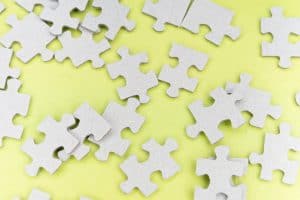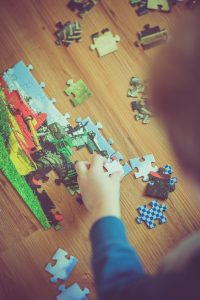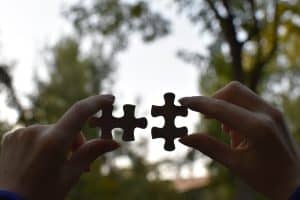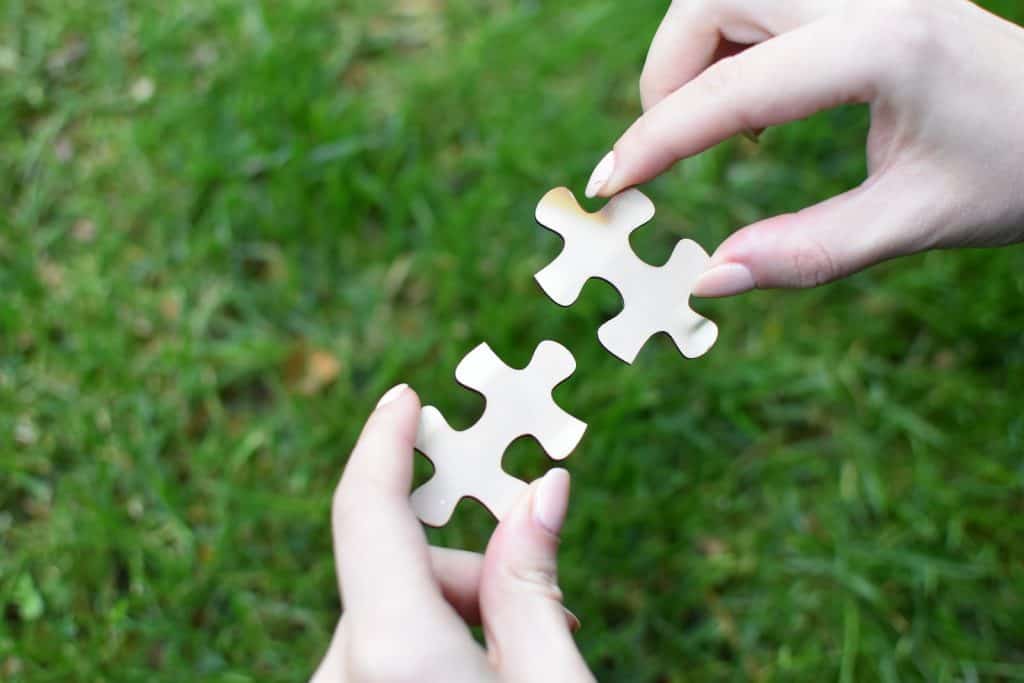Who says puzzles are just for kids? Everyone can actually enjoy this game. Today, we will discuss puzzle pieces by age.
The pieces of a puzzle come in irregularly shaped puzzles, sizes, and age range. Whether you’re a young child just starting to learn the basics of problem-solving or an adult revisiting a hobby with an old favorite, puzzles can provide hours of enjoyment.
For young children, puzzles help build coordination and fine motor skills while teaching them problem-solving basics. Puzzles featuring letters, numbers and knob inset puzzles are particularly helpful for learning how to read and count. Different age groups can create their own puzzles by cutting out pictures from magazines or drawing their own shapes and designs onto cardstock for a personalized challenge.

When it comes to adults, the jigsaw puzzle possibilities are limitless. Working on jigsaw puzzles helps stimulate memory and thinking skills as well as increase patience levels; perfecting the picture one piece at a time is extremely satisfying. If a traditional puzzle isn’t quite challenging enough, there are now 3D puzzles made from interlocking hard plastic pieces that require much more concentration than two-dimensional ones.
No matter what age you are, putting together puzzles is relaxing yet stimulating which makes it an enjoyable experience no matter your skill level or interests.
Suitable Puzzle Pieces by Age Group
From simple peg puzzles to thousand-piece jigsaw puzzles, there is a puzzle design suitable for people of all ages.
Young children can start with baby puzzles, basic alphabet and small number of pieces puzzles to help them learn their ABCs and counting basics. As they progress, the difficulty of the puzzles can increase too. More complex puzzles with patterns, shapes or silhouettes can teach children how to recognize and group items together.
For teens and adults, challenging puzzles are an excellent choice as they require focus and patience to complete them correctly. Puzzles with more pieces that feature intricate designs are recommended as it helps stimulate memory skills while growing confidence in problem solving.
And don’t forget about 3D puzzles! With interlocking mechanisms that look like real objects when completed, 3D puzzles develop spacial perceptions as well as strengthen finger dexterity.

How to Choose the Perfect Puzzle for a Kid
Choosing the perfect puzzle for a kid can be a difficult task. But here are some tips to help you out:
- Start off with simple puzzles – It is best to start children off with puzzle material with fewer pieces that they can easily put together and learn the basics of matching shapes and patterns. This can also make it more enjoyable than frustrating.
- Look for age-appropriate themes – Opting for puzzles with characters, animals, or other familiar images that fit their age and interests will help young kids make connections between the image and their skill set.
- Consider your child’s skill level – If you think your child is ready for something a bit more advanced, look for floor puzzles with more pieces or a more challenging level to help build upon what they already know. Doing so will prevent them from getting too frustrated and give them a feeling of accomplishment when finished.
- Double check for safety – Make sure that all pieces are sturdy enough for little hands and don’t contain any small parts that could potentially become a choking hazard if swallowed – always check labels!
With these tips in mind, you should have no problem finding the perfect puzzle for your kid!

Puzzle Pieces by Age Bottom Line
Puzzle pieces are an invaluable educational tool for kids of all ages, as they help strengthen their problem solving and cognitive skills. For young children, start off with puzzles that have fewer pieces. As they grow older and more mature, they can take on more difficult puzzles with higher numbers of pieces and a greater challenge. Most importantly, it’s important to choose age-appropriate puzzles that also fit their interests and skill set. This way, you will ensure a fun yet useful experience for your child!

